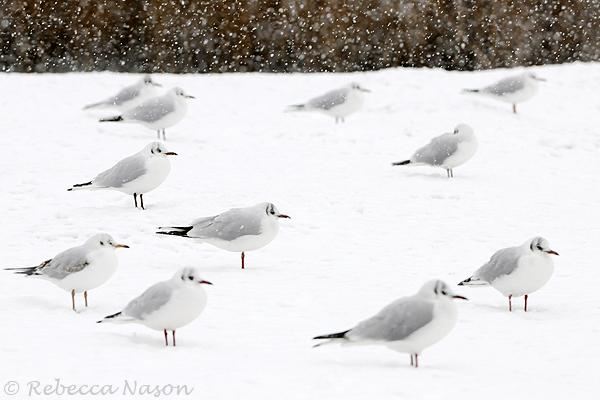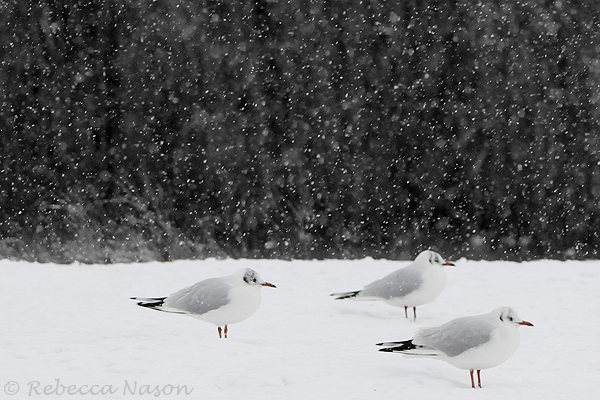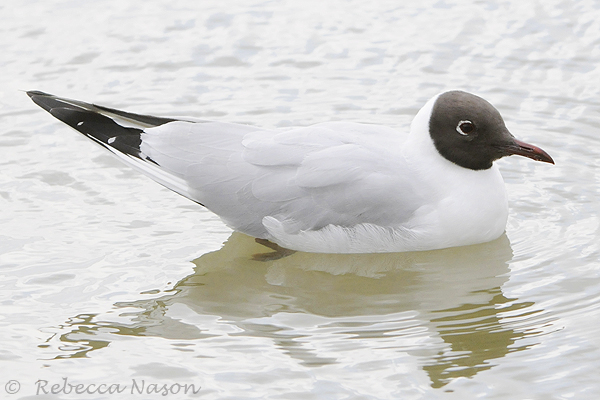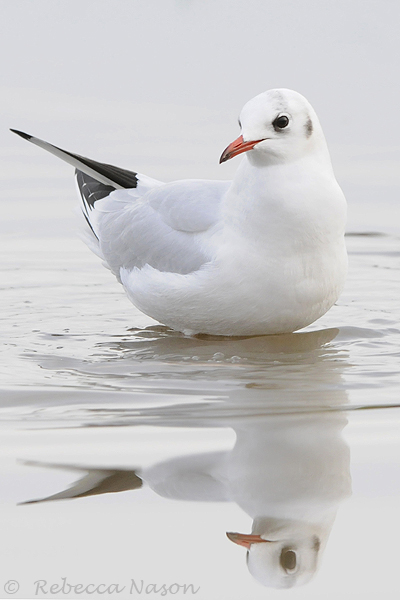Gull-ty Pleasure
UK Winter Wonderland – The weather in the UK has been more reminiscent of Siberia over the past 10 days of so, with thick snow in many parts and near constant minus temperatures. Now back in Suffolk after our Autumn on Fair Isle, we have been quite literally in the thick of it with over a foot of snow in the garden, -6 a regular temperature and of course the typical infrastructure collapse associated with bad weather in the UK! (we don’t seem to learn to prepare for harsh Winters – why we don’t look North at how the Scans cope with their cold Winters I don’t know!). With all transport at a near standstill I found myself caught up in it whilst trying to get back from Bristol to Suffolk on Thursday after carrying out bird survey work for a few days. The journey had been relatively snow and ice free, until in seemed, I neared the Suffolk border . . . then it was like trying to enter a different country, not county, there was no route open to get home . . and so do my blog posting! oh no! and I had to back track to Cambridge to stay with my family until the following day when the ice roads had thawed slightly to allow safe passage. . . this is a long winded way of expressing my excuses for a late posting this week 😉
The Location – We live about 5 minutes walk from the Deben Estuary on the Suffolk coast, a great place for any birder and not too far up the coast from arguably even better birding, in Norfolk. As well as birding, Phil and I share a passion for bird ringing (banding in the US!). We have done a lot of ringing on Fair Isle, in Cambridgeshire at Wicken Fen NNR (where we trained) and more recently in the last 2 years, at a couple of private sites near our home in Suffolk. On occasions we have also tried a little ringing in our garden, it is a tiny 6 metre square town terrace garden with a shed – so not ideal . . . . However,with the change in weather came a change in the bird behaviour of one particular species and, as a result, a change in our ringing fortunes!
Black-headed Gull (Larus ridibundus) – Action Black-headed Gulls are the most common gull species in the UK, they are on the increase and although once thought of as only coastal birds, are now more commonly seen inland where they have taken advantage of old sewage works and gravel pits in which to breed. Although they are a common nesting birds in the UK both on the coast (especially the South and East coast colonies) and inland where there are over 140,000 breeding pairs, the numbers of these birds swell dramatically during the Winter months to up to 1,700,000 birds (RSPB stats).
Black-headed Gulls migrate South and West to escape harsher climates in other parts of Europe and many overwinter in the UK. Our local Deben Estuary is always a good place to see these birds during any season and good numbers of gulls fly over our little house on a daily basis, usually in groups in the evenings as they head off to roost.
These Black-headed Gulls are normally quite wary birds here and do not come into town gardens to scavenge for food. However with the sudden harsh weather conditions and snow, this has changed as the birds lose their natural food sources of insects, earthworms and other vegetable matter and begin to hunt about more widely for a meal, taking house-hold waste and plucking up courage to enter the town gardens as they become more desperate. A few days ago we decided to try and trap and ring some gulls in our garden. We started to bait the garden with bread on our flat shed roof. Soon the gulls had noticed the bread and a number hovered over the garden before diving down and snatching bread pieces, soon followed by argument and a lot of mid air combat!
After a couple of days of baiting we set our Spring trap in the snow on the shed roof and quite quickly began to catch gulls! Over a 2 days period we caught 10 Black-headed Gulls, some 1st year birds and a few adults, we were really pleased that our method worked and our tiny garden was bringing in the goods! Superb! . . .the highlight however, came with the first catch on the second morning. Phil lifted up the trap and extracted an adult Black-headed Gull, he then noticed a shiny ring on its left leg . . . .we had re-trapped one of the birds we ringed yesterday? . . . no! something wasn’t quite right . . .this looked different! On inspecting the ring more closely we were astonished to see that we had actually caught a foreign ringed Black-headed Gull – from LITHUANIA! WOW! How fantastic, a Lithuanian Black-headed Gull in our pea-sized garden! For the ringing enthusiast this really was Christmas come early!! . . . . we look forward to receiving the full details once the information from the ring has been processed by the BTO (www.bto.org.uk) in due course but for sure, this bird has travelled over 1,300km from Lithuania to our garden – incredible!
Bird ringing is such an exciting, interesting and rewarding way of contributing to bird research and conservation, whatever country you are in. Why not contact your local ringing group for details of how you could take part and become a trainee ringer?! If you are in the UK, the BTO website (linked above) will show you all the details and contacts you need to know and much more about the ringing scheme.
‘The Winter Oak’ image at the top of the page is available as a limited edition 40 x 20 inch high grade acrylic print from www.seapicturesgallery.com







Lovely photos, and a bird I certainly don’t take for granted in the SW United States. And congratulations on the banding recapture! It’s always exciting to find another bander’s bird and imagine how thrilled they will be to learn of your discovery.
Wow..Congrats on the Bird from Lithuania…look forward to learning more about that bird. Hope you will post the info. Great post and photos!